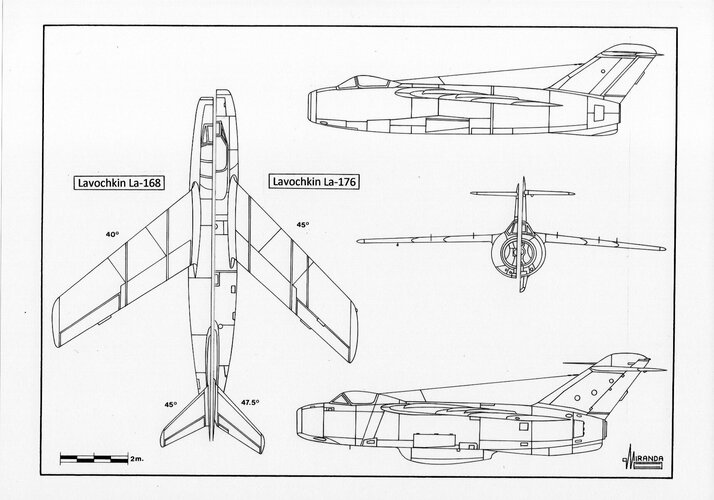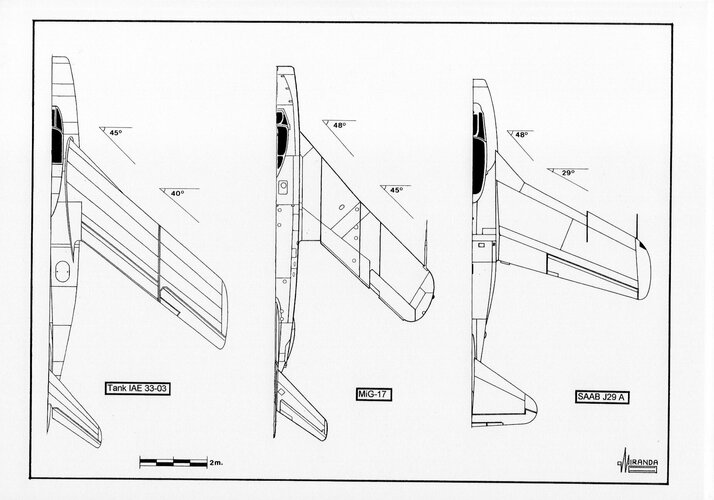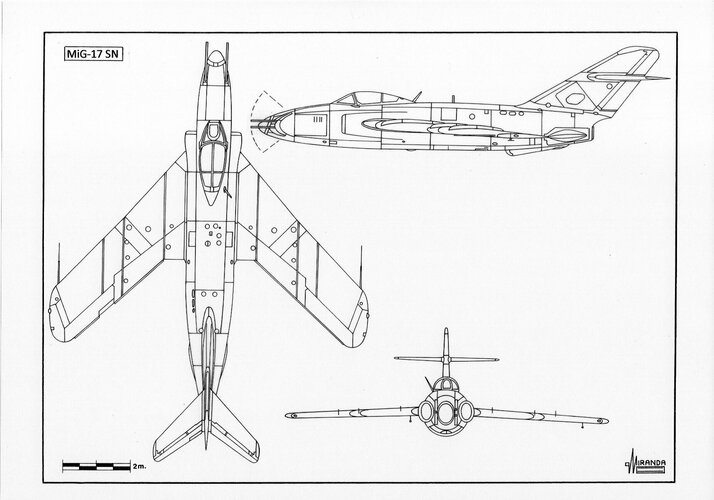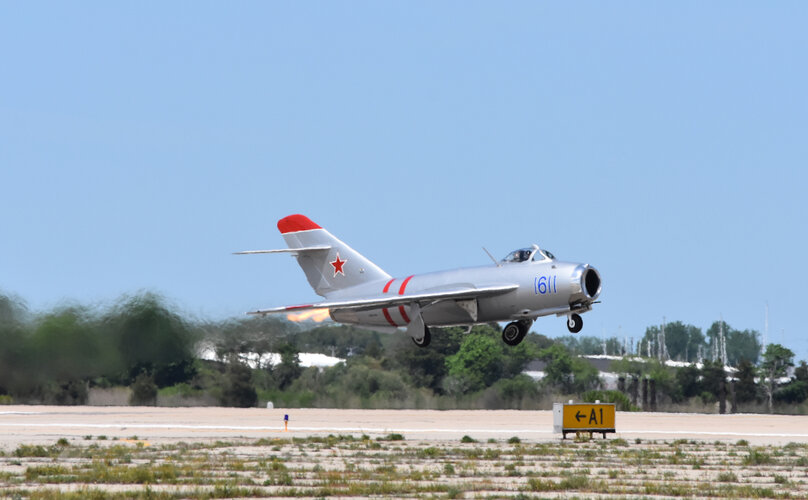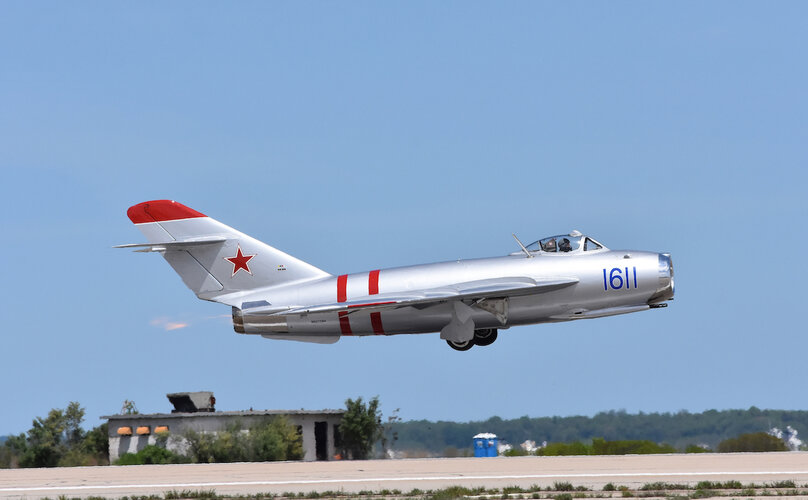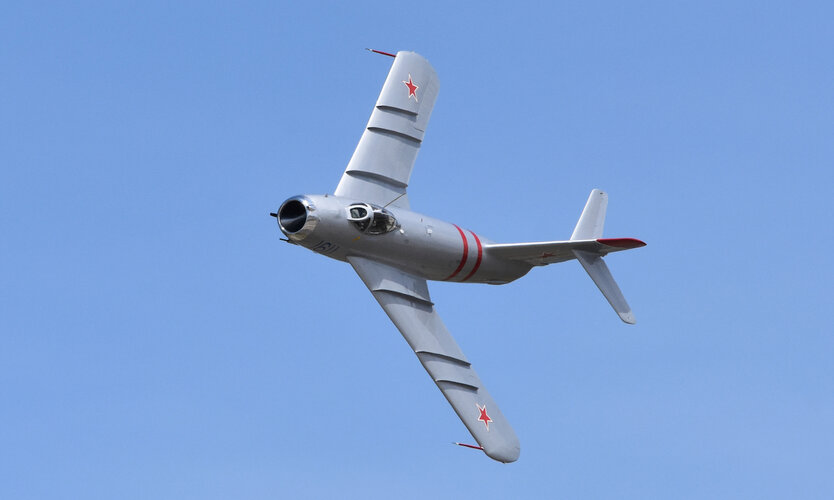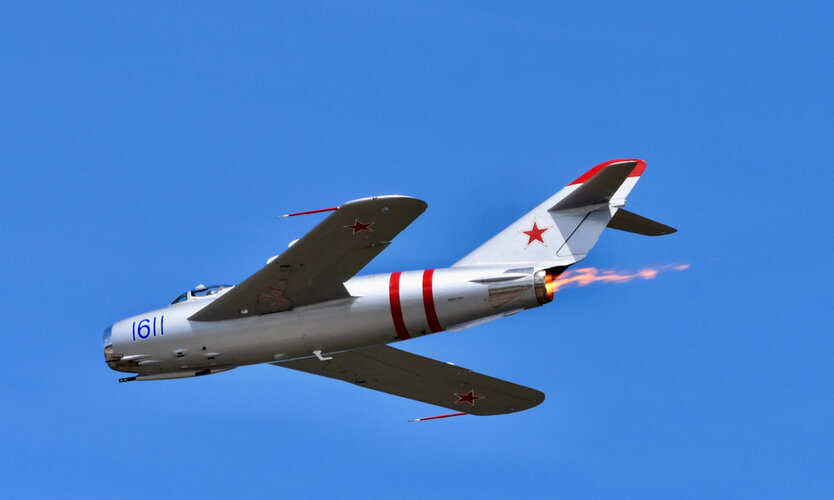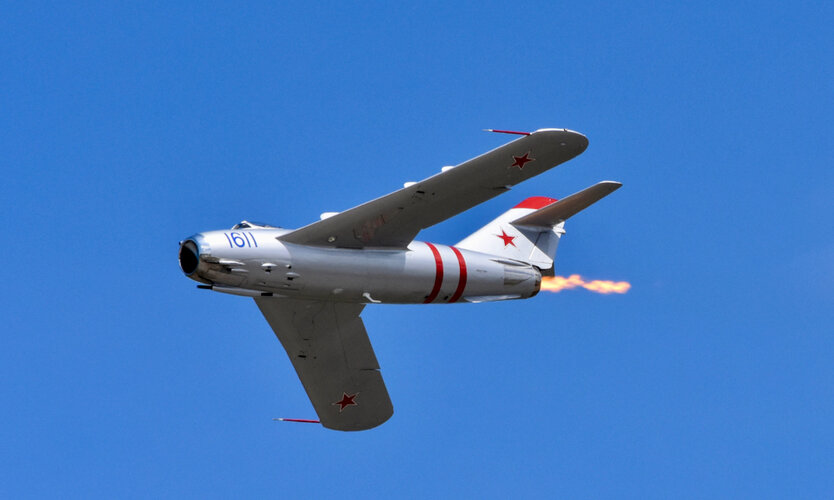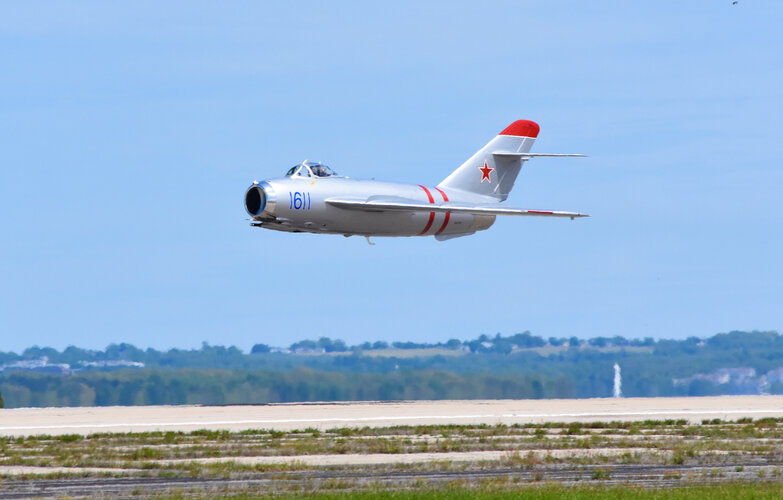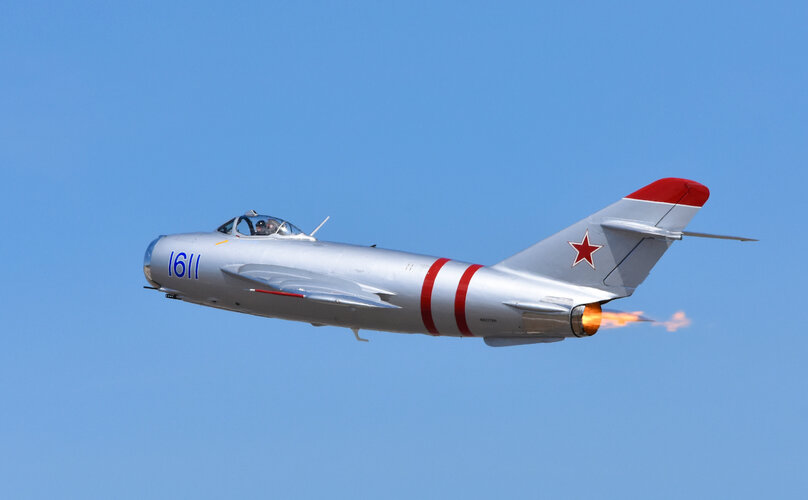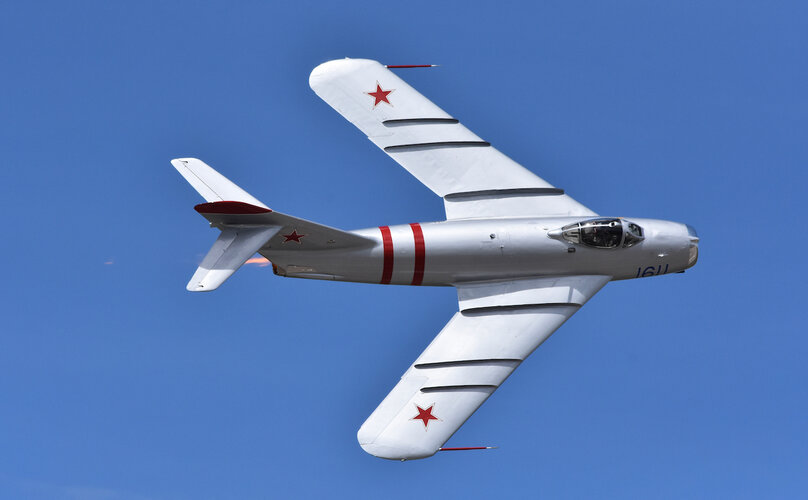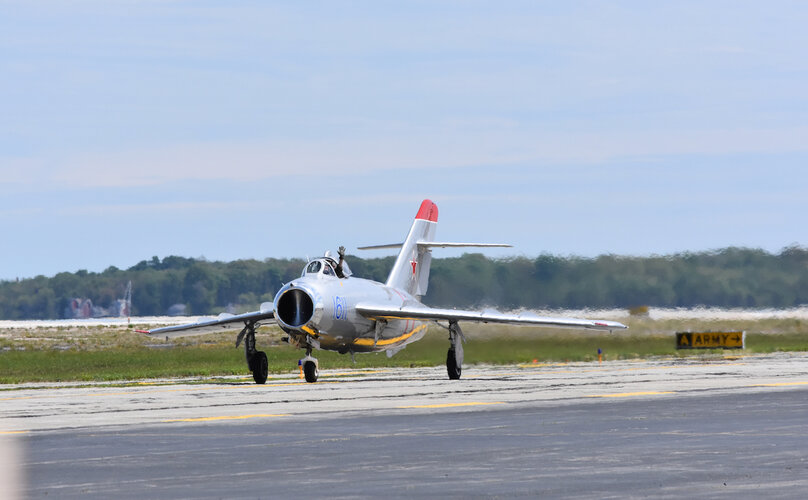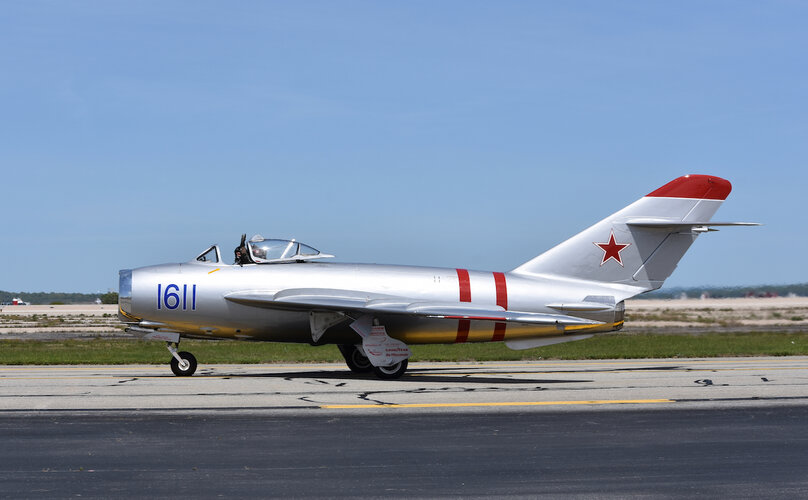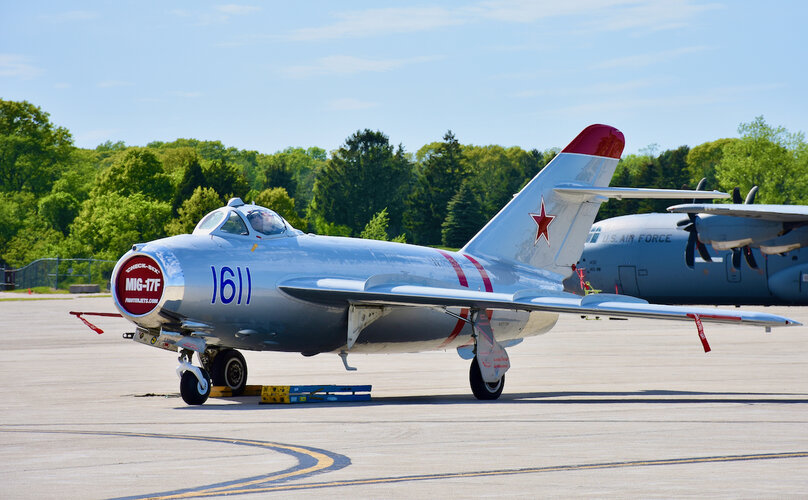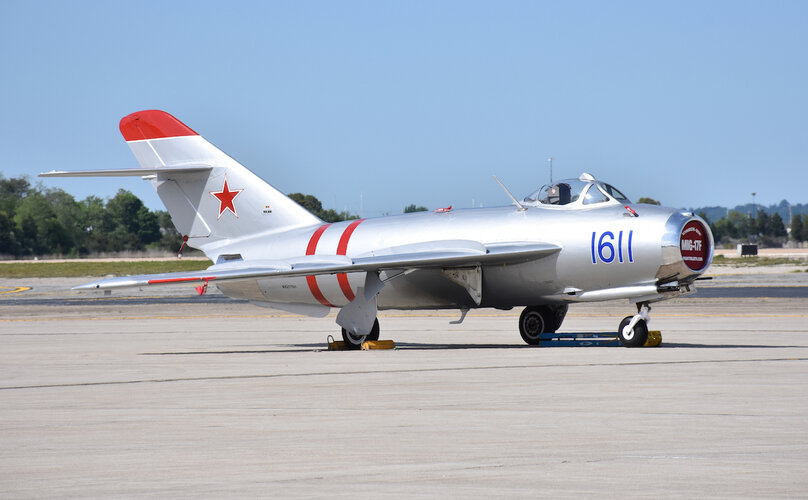Fagot versus Fantail
When the MiG OKB won the March 11, 1947 fighter contest, the MiG-15 production had priority to receive the most powerful RD-45 turbojet (the Soviet version of the Rolls-Royce Nene Mk.I).
The Lavochkin bureau stopped the La-168 development to concentrate their efforts in the design of the La-174, a new fighter that was 340 kg less heavy than the MiG and that would be powered by the less powerful RD-500 turbojet (Soviet version of the Rolls-Royce Derwent V).
The La-174 was a 90% scaled down version of the La-168 and it had no relation to the La-174 TK straight wing prototype.
The aircraft was flown on January 8, 1948, suffering dangerous tailplane flutter and crashed during testing on May 11, 1948.
The defect was corrected in the second prototype La-174D that flew on June 12, 1948.
Combats tests performed in the Tshkalovsk research center proved that the La-174D was superior to the MiG-15 in maneuverability, because its lower weight and excellent wing design compensated for the turbojet's lack of power.
In September 1948 the new fighter was accepted for production, alongside the MiG-15, and officially named Lavochkin La-15 in April 1949.
Operational tests with the 192nd IAP began in May 1949, at Kubinka-Moscow, but the unreliable hydraulic system resulted in undercarriage failures and landing crashes due to the extremely narrow track (1.70 m) of its landing gear.
The VVS had already had problems in 1943 with the landing instability of their Spitfires on rough-field operations and the frequent crashes of the La-15 at side wind were considered unacceptable for a front-line fighter.
Only 235 La-15 fighters were built between December 1948 and August 1949.
The shoulder mounted La-15 wings (with 37º 20’ swept, 25 % chord, 12% thickness, 6º anhedral and smaller span-chord ratio than those of the MiG) were based on those of the La-160. They were more resistant and rigid because they were not designed to accommodate the main undercarriage legs.
But the La-15 wings were more complex to produce, and their light airframe was not sturdy enough to withstand the recoil of a 37 mm cannon.
The more rugged design of the MiG-15 was cheaper and easier to produce.
If the La-15 had been used in Korea against the F-86 fighters it would surely have been more successful in dogfight than the MiG-15, but most Russian historians deny the La-15's involvement in the war.
On the contrary, there are reports in the CIA Current Intelligence Bulletin of multiple sightings of jet fighters with shoulder-mounted wings.
These aircraft were seen by American and British pilots of F-86E, B-26, RF-80 and F-51 aircraft of the UN forces in Korea.
Pilots believed it was a new type of MiG and referred to it in reports as “MiG-17” or “Type-15”.
In late March 1952 a “Type 15” was observed only 100 feet away by the pilot of an F-86E of 4th FIG, 335th FIS. (Report of Lt. James D. Carey published in Time Magazine on March 13, 1952).
According with the CIA-FOIA files and with the reports of the UN pilots, the “Type 15” was sighted 14 times, engaged 10 times, two aircraft were destroyed and 11 damaged.
According to the article published by V. Ilyin, V. Rudyenko and J. Martinek in the Czech magazine Zlinek (Nº 14, vol. 2, 1994) a VVS Fighter Regiment, with twenty-two La-15 airplanes, carried out combat operations in Korea suffering four crashes due to the poor condition of the airfield. The other machines were sent back to the USSR.
Additional information from the specialized authors Mikhail Zhikorov, Warren Thompson and Larry Davis were published at “Wings of Fame” (Volume 1, 1995) and
http://sovietwarplanes.com/board/index.php?topic=1534.0
https://www.aereimilitari.org/forum/topic/9275-lavochkin-la-15-in-corea/
http://sabre-pilots.org/classics/v133duck.htm
http://www.foia.cia.gov/
It is strange that the Soviets did not attempt to use the La-15 against the UN Sabres when the MiG-15s began to be systematically destroyed because of their inferior maneuverability.
So, what is the truth?
Lavochkin La-15 Fantail technical data
Power plant: one Klimov RD-500 turbojet rated at 1,590 kg thrust, wingspan: 28.9 ft. (8.83 m), length: 31.3 ft. (9.56 m), height: 12.8 ft. (3.9 m), wing surface: 179.6 sq. ft. (16.16 sq. m.), take-off weight: 8,500 lb. (3,850 kg), max speed: 638 mph (1,026 km/h), ceiling: 44,280 ft. (13,500 m), armament: three 23 mm NR-23 cannon, equipment: pressurized cockpit with (German) ultraviolet illumination of the instrument panel, ASP-1N gyroscopic gunsight (direct copy of the British Mk.IID), KUS-1200 speedometer, M-46 Machmeter, V-15 altimeter, RSI-6K R/T, S-13 gun camera and ejector seat.
To test the limits of the La-168 aerodynamic configuration, the La-176 prototype was built during the summer of 1948.
The new airplane was flown on September 22, 1948, fitted with 45-degree swept wings (25% chord) and three fences in each wing, reaching Mach 0.98 top speed only.
The RD-45 was replaced by a Klimov VK-1 (the Soviet version of the Rolls-Royce Nene Mk.2) with 2,700 kg thrust.
On December 26, 1948, the La-176 exceeded the speed of sound diving from 39,360 ft. (12,000 m) over the Black Sea.
On February 3, 1949, the prototype disintegrated in flight when the canopy locks failed near Mach 1.
Lavochkin La-176 technical data
Power plant: one Klimov VK-1 turbojet rated at 2,700 kg thrust, wingspan: 28 ft. (8.59 m), length: 36 ft. (10.97 m), wing surface: 203 sq. ft. (18.25sq. m.), take-off weight: 10,209 lb. (4,631 kg), max speed: Mach 1.021, ceiling: 49,200 ft. (15,000 m).


